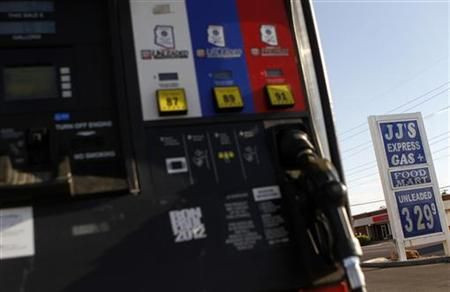Consumers, Businesses Pump up U.S. Q3 Growth

U.S. economic growth increased at its fastest in a year in the third quarter as consumers and businesses set aside fears about the recovery and stepped up spending, creating momentum that could carry into the final three months of the year.
Though part of the increase came from the reversal of temporary factors that had restrained growth, the expansion was a welcome relief for an economy that looked on the brink of recession just weeks ago.
U.S. gross domestic product expanded at a 2.5 percent annual rate in the third quarter, the Commerce Department said in its first estimate on Thursday. That was a big acceleration from the 1.3 percent pace in the April-June quarter and matched economists' expectations.
The probability of a double-dip has diminished quite a bit, said Sung Won Sohn, an economics professor at California State University in the Channel Islands. He made the comments before the release of the report.
Consumer spending in the last quarter was the strongest since the fourth quarter of 2010, while business investment spending was the fastest in more than a year. Even though consumer spending was stronger, businesses were slow in stocking up their warehouses.
The peppier spending and a slower pace of inventory accumulation by businesses will lay a base for a solid fourth quarter, but a slowdown in Europe and the exhaustion of pent-up U.S. demand could leave a weak spot early in 2012.
And the recovery's pace is still too weak to lower a jobless rate that has been stuck above 9 percent for five straight months.
FEARLESS SPENDING
A jump in gasoline prices had weighed on consumer spending earlier in the year, and supply disruptions from Japan's earthquake had curbed auto production. Motor vehicle output has surged as those supply constraints have eased.
In addition, car sales, which were held back by the lack of popular models, have also shown renewed strength.
As a result, consumer spending, which accounts for about 70 percent of U.S. economic activity, grew at a 2.4 percent rate after slowing to a 0.7 percent pace in the second quarter.
The relative vigor comes even though consumer confidence has hit levels last seen during the worst of the 2007-09 recession.
Similarly, while some business surveys have pointed to a contraction in factory output, there is little sign corporate America is cutting back spending. Indeed, recent data has suggested business spending is picking up. Business spending rose at a 16.3 percent pace as companies splurged on equipment and software, and invested in nonresidential structures.
Inventories rose only $5.4 billion in the third quarter, the smallest gain since the fourth quarter of 2009, after increasing $39.1 billion in the second quarter. Inventories subtracted 1.08 percentage points from GDP growth.
Excluding the drag from inventories, the economy grew at a 3.6 percent pace -- pointing to underlying strength in domestic demand -- after expanding 1.6 percent in the April-June period.
Apart from consumer and business spending, growth in the third quarter was also supported by a smaller U.S. trade deficit, and the careful management of business inventories bodes well for fourth-quarter production.
Spending on residential construction rose at a modest 2.4 percent pace after growing at a 4.2 percent rate in the second quarter. Government spending was flat, reflecting continued budget cuts by state and local governments. However, the pace of decline in state and local government spending is moderating.
The GDP report also showed a moderation in inflation pressures, with the personal consumption price index (PCE) rising at a 2.4 percent rate in the third quarter, slowing from the April-June quarter's 3.3 percent pace. Core PCE, which excludes food and energy, rose at a 2.1 percent rate after increasing 2.3 percent in the second quarter.
© Copyright Thomson Reuters 2024. All rights reserved.





















